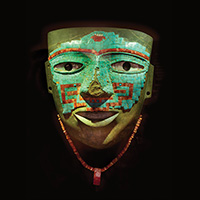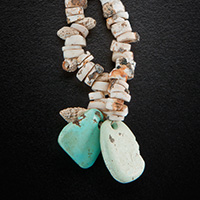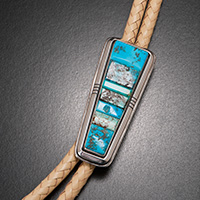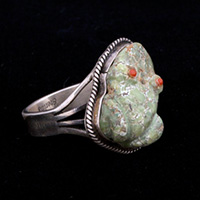The Stone:
Turquoise Mining
Turquoise has been mined in North America for hundreds of years. Early miners did not have metal tools; instead they used stone hammers and wedges to break open the host rock and access veins of turquoise. Some pre-Hispanic mines, like the famous Mount Chalchihuitl near Cerrillos, New Mexico, became large open pits, a result of centuries of digging.
When the Spanish and later Americans entered the region, they were more interested in mining metal ores than turquoise. Because turquoise has a high copper content, it is often found in copper mines, where for years it was tossed onto tailings piles.
In the late 1800s, however, turquoise became popular outside the region and turquoise mining became commercially viable. In Cerrillos, cigar boxes of unprocessed turquoise were shipped to the East Coast, demonstrating that even with metal tools and dynamite, sometimes turquoise mines yielded small quantities.
Stone in a range of color is found at any given mine, depending on the local environment. While some turquoise can be visually associated with a particular mine, most cannot.
Turquoise roughs (14396/12, Origin/Artist: Cerrillos District, New Mexico)



